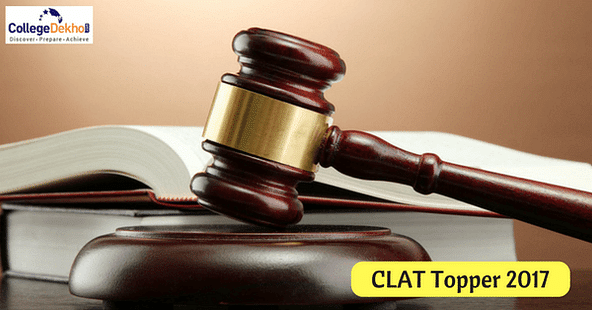- Jaipur’s Rajat Maloo topped the Common Law Entrance Test (CLAT) exam 2017.
- Rajat scored an aggregate of 154.25 marks out of 196.
- The second position was secured by Vihit Ashish Shah of Maharashtra with 150.25 marks.

Jaipur’s Rajat Maloo emerged as the topper of the Common Law Entrance Test (CLAT) exam 2017 in the undergraduate (UG) category. CLAT 2017 results were announced on Monday, May 29. Rajat scored an aggregate of 154.25 marks out of 196.
The Registrar of the Chanakya National Law University (CNLU), Patna , informed about the result and said that the result is currently being uploaded and will soon be available online for students.
The second position was secured by Vihit Ashish Shah of Maharashtra with 150.25 marks out of 200. Rajasthan’s Radhika Sharda scored 148.5 and bagged the third position and the fourth position was secured by Sumit Kumar Gupta from Bihar’s Purnea district who scored 147.5 marks.
Rajat is a student of Jayshree Periwal High Schoool and studied Science in Class 12. He scored 74.8% marks in his class 12 board exams. He developed an interest in the field of law and decided to appear for CLAT 2017 exam.
Also Read: Check Out the CLAT 2017 Expected Cutoff and Detailed Exam Analysis
Where Rajat set an example for the CLAT UG aspirants, Uttar Pradesh’s Pranav Tripathi secured the first position in the CLAT PG entrance. He scored an aggregate of 125 marks out of 150. The second and third rank was secured by Swati Verma (121.5) and Abhishek Sinsinwar (120.25) respectively. All the top 7 spots were bagged by Uttar Pradesh students.
The category-wise merit list for CLAT has been announced, whereas, the first indicative seat allotment list will be declared on the merit-cum-preference basis by June 5, 2017.
The updated answer keys were released on May 25, 2017. The exam conducting authority removed 4 questions due to errors and ambiguities. A total of 50,676 candidates applied for the exam out of which 47,108 candidates appeared for CLAT 2017 online test.
Also Read: CLAT 2017 Final Answer Key Released; Result on 29th May
Admission to various UG and PG law courses offered by 18 National Law Universities (NLUs) in India is done on the basis of CLAT. 2017’s CLAT exam was conducted on May 14 by CNLU in online mode across 138 centres throughout India.


 Follow us
Follow us













